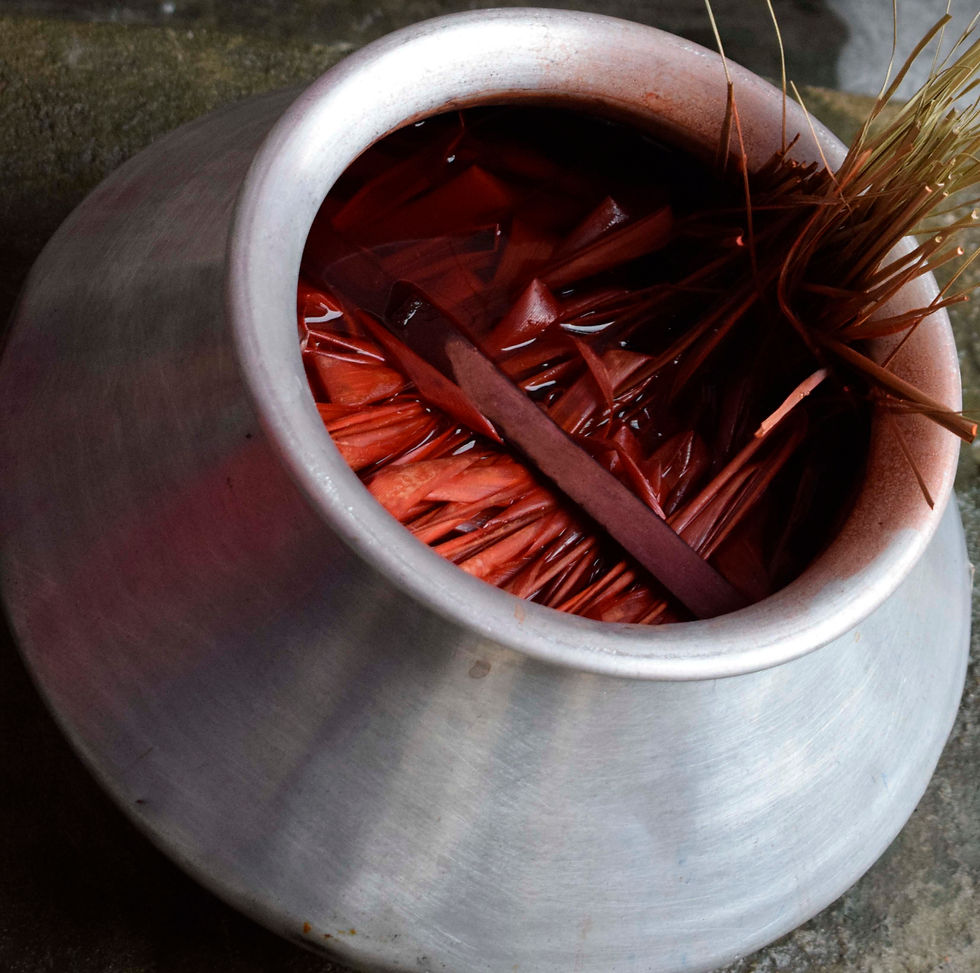Situated on the bank of Yamuna river, Mahewa village of Prayagraj, Uttar Pradesh, is known for its handwoven Moonj grass products.
There are few shops in the local market Chowk selling Moonj grass products, but it's not a popular product that is easily available. According to the shop owners, Moonj products are in high demand during the wedding season as it’s used in some wedding rituals. Most of the shops get their supply from Mahewa village located in the Naini area, which is around 8 km from the Chowk.
A Shop in Bahadur Ganj area of Chowk market selling Moonj Products (Prayagraj, UP, India)
The Moonj Artisans
Upon reaching Mahewa village, it was clear that most of the women here weave Moonj products. Munni Begum and her family are living in this village for many generations. Women of her family are actively engaged in weaving, and her son runs a grocery store Rashid Kirana. "I’m actively making Moonj baskets for decades. My mother has taught this craft to me. My family is practicing this craft for many generations. Now I’m passing this skill to my two daughters Aliya and Sabreen." She says.
Though their primary source of income is the grocery store, basket weaving is also a part of their daily routine. After finishing their household work, they dedicate 3-4 hours daily to this craft. They know how to weave all kinds of products and nowadays also weave on-demand products like coasters, placemats, and earrings. Sabreen knows some craftsmen who weave even finer products, and she wishes to learn from them to master the skill.
Munni Begum with her daughters Sabreen and Aliya.
What is Moonj?
Moonj is the outer skin of Sarpat grass or Saccharum Munja and found in the desert areas and along river banks of northern India. It is harvested during winters in October-November month. It grows up to 2 meters in height and carries white flowers.
The whole plant holds potential value for natives. The hard inner stalk is suitable for making ropes, furniture, brooms, and thatched roofs. The soft outer peel or Moonj is perfect for weaving daily-use products like baskets and containers. The plant also has medicinal value and plays a vital role in stabilizing erosion-prone land.
1. Raw material for weaving | 2. Coloring process
The Process of Weaving Moonj Products
A combination of Moonj and Kaasa grass is popular in Prayagraj for weaving the grass products because both the grasses grow abundantly in this area. The raw material is available once a year, so the craftsmen purchase it to meet the demand for the entire year.
The first step is to make knots of green layers of Moonj, locally known as Balla. Then keep in the open sun for drying. It’s dipped into water for a few hours so that it becomes more flexible for weaving. Some Ballas are boiled in water mixed with desired colors to make colorful patterns in weaving. The Ballas are coiled around the dried Kaasa grass very tightly which makes it almost waterproof. Salai, the needle-like tool is used for weaving.
The Govt. of Uttar Pradesh has initiated the “One District One Product” scheme to promote the indigenous crafts of the state. Moonj products are recognized under the ODOP scheme for Prayagraj. It will encourage artisans like Munni Begum to keep developing and benefiting from this precious craft.
Hint of Tradition has collaborated with artisan Aliya and Sabreen to bring you handmade Moonj Products.
Pictures By: Jyoti Singh







Hey Jyothi, nice and much looked info over Internet. You can connect with us write-up your stories in future and I would like to list these products on our eCommerce platform - ArtyCraftz.in